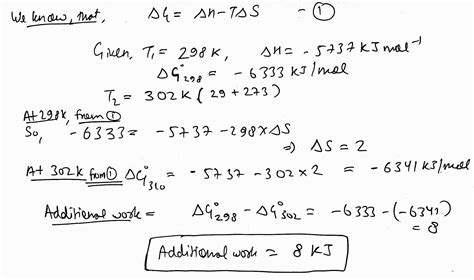Understanding Molarity and Temperature
In chemistry, molarity is defined as the number of moles of solute per liter of solution. The mole is the SI unit of amount of substance, which is equal to 6.022 × 1023 particles (atoms, molecules, ions, etc.). Temperature plays a crucial role in determining the molarity of a solution, as it affects the volume and density of the solvent.

Ideal Gas Law and Molarity
Under ideal conditions, the behavior of gases can be described by the Ideal Gas Law, which states that the product of pressure and volume of a gas is equal to the product of the number of moles of gas and the gas constant multiplied by the absolute temperature:
PV = nRT
Where:
- P is the pressure of the gas in pascals (Pa)
- V is the volume of the gas in cubic meters (m3)
- n is the number of moles of gas
- R is the gas constant, 8.314 J/mol·K
- T is the absolute temperature in kelvins (K)
At standard temperature and pressure (STP), which is defined as 273.15 K (0 °C) and 100 kPa, one mole of gas occupies a volume of 22.4 liters.
Conversion from Molarity to Moles
To calculate the number of moles of solute in 1 liter of solution at 298K, we can use the following formula:
Moles = Molarity × Volume of solution (in liters)
For example, if we have a 1-molar solution, which means it contains 1 mole of solute per liter of solution, then the number of moles in 1 liter of solution at 298K is:
Moles = 1 mol/L × 1 L = 1 mol
Applications of Molarity
Understanding molarity is essential for various applications in chemistry and other scientific fields, including:
- Quantitative analysis: Determining the concentration of unknown solutions by titrating with solutions of known concentrations.
- Stoichiometry: Calculating the amount of reactants or products involved in a chemical reaction.
- Dilution: Preparing solutions of specific concentrations by diluting stock solutions.
- Chemical engineering: Designing and optimizing chemical processes that involve solutions.
Common Mistakes to Avoid
When working with molarity, it is important to avoid common mistakes such as:
- Confusing molarity with normality: Molarity represents the concentration of a solution in terms of moles of solute per liter, while normality represents the concentration in terms of equivalents of solute per liter.
- Measuring solutions at non-standard temperatures: Temperature affects the molarity of a solution, so it is important to measure solutions at the desired temperature or make corrections for temperature changes.
- Using incorrect units: Molarity is expressed in moles per liter, and it is important to use the correct units in calculations and conversions.
Conclusion
Molarity is a fundamental concept in chemistry that represents the concentration of a solution in terms of moles of solute per liter. Understanding molarity is essential for various applications in chemistry and other scientific fields. By carefully considering the temperature of the solution and using the appropriate conversion formulas, scientists can accurately determine the number of moles in a given volume of solution.
